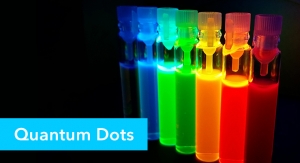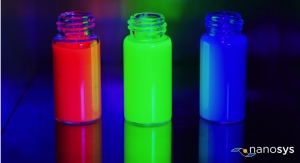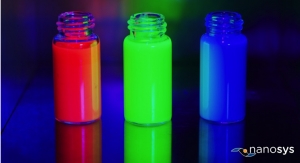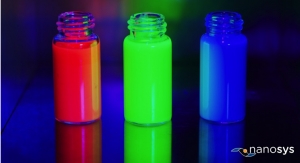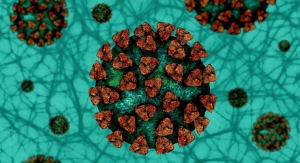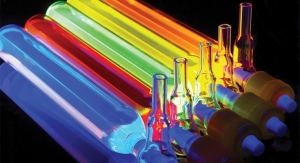12.05.17
Nanosys and DIC announced a breakthrough in inkjet-printed quantum dot color conversion devices for LCD and emissive displays, paving the way to the $12.6 billion anticipated market for low cost, ultra-thin and flexible displays.
Inkjet printing of quantum dot color conversion layers has the potential to dramatically improve the incumbent LCD technology, as well as accelerate the development of emerging emissive display technologies such as microLEDs.
Inkjet-printed quantum dot color filter replacement layer.
The benefits of quantum dot color conversion layers include a power efficiency or brightness improvement of as much as 300%, perfect 180° viewing angles and lifelike color accuracy with much wider color gamut.
“Nanosys is focused on providing best-in-class quantum dot materials and technology to help printed quantum dot displays achieve mass commercialization,” said Kiyotaka Kawashima, executive officer and GM Corporate R&D Division, DIC Corporation. “We expect that our collaboration with Nanosys will enable display makers to successfully manufacture printed quantum dot displays, at scale, sooner.”
Delivering a true mass production-ready ink jet printing solution for large area UltraHD quantum dot displays required technical breakthroughs in several key areas. Nanosys cadmium-free quantum dots have been designed to be compatible with DIC’s materials and processes used for inkjet printing. Inks have been created for jettability across a wide range of print heads and tuned for both UV and thermal curing, giving display makers flexibility to deploy the materials in different manufacturing lines.
“With DIC and Nanosys combining their considerable expertise in inkjet printing and Quantum Dot materials, the industry is poised to take a significant step forward in achieving low cost mass production of quantum dot displays,” said Russell Kempt, VP of sales and marketing at Nanosys.
Nanosys and DIC Global executives will present on breakthroughs in ink jet printing for Quantum Dot display mass production at this week’s 2017 International Display Workshop in Sendai, Japan.
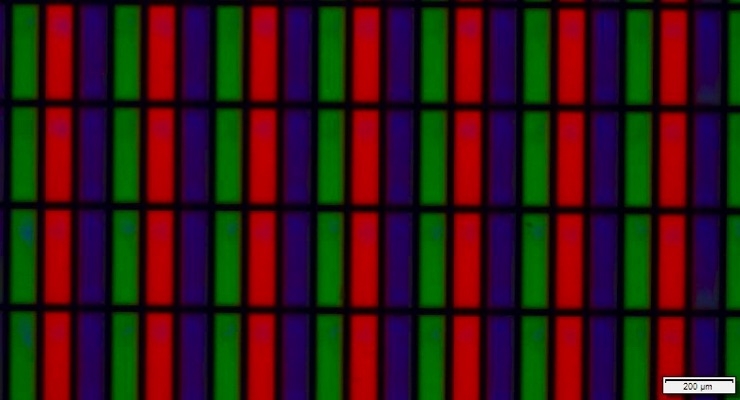
Microscope capture shows Nanosys red and green cadmium-free quantum dots in DIC ink printed into 100 by 300 micron sub-pixels. Pixel size equivalent to a 50-inch UltraHD TV. (Source: Nanosys)
Inkjet printing of quantum dot color conversion layers has the potential to dramatically improve the incumbent LCD technology, as well as accelerate the development of emerging emissive display technologies such as microLEDs.
Inkjet-printed quantum dot color filter replacement layer.
The benefits of quantum dot color conversion layers include a power efficiency or brightness improvement of as much as 300%, perfect 180° viewing angles and lifelike color accuracy with much wider color gamut.
“Nanosys is focused on providing best-in-class quantum dot materials and technology to help printed quantum dot displays achieve mass commercialization,” said Kiyotaka Kawashima, executive officer and GM Corporate R&D Division, DIC Corporation. “We expect that our collaboration with Nanosys will enable display makers to successfully manufacture printed quantum dot displays, at scale, sooner.”
Delivering a true mass production-ready ink jet printing solution for large area UltraHD quantum dot displays required technical breakthroughs in several key areas. Nanosys cadmium-free quantum dots have been designed to be compatible with DIC’s materials and processes used for inkjet printing. Inks have been created for jettability across a wide range of print heads and tuned for both UV and thermal curing, giving display makers flexibility to deploy the materials in different manufacturing lines.
“With DIC and Nanosys combining their considerable expertise in inkjet printing and Quantum Dot materials, the industry is poised to take a significant step forward in achieving low cost mass production of quantum dot displays,” said Russell Kempt, VP of sales and marketing at Nanosys.
Nanosys and DIC Global executives will present on breakthroughs in ink jet printing for Quantum Dot display mass production at this week’s 2017 International Display Workshop in Sendai, Japan.

Microscope capture shows Nanosys red and green cadmium-free quantum dots in DIC ink printed into 100 by 300 micron sub-pixels. Pixel size equivalent to a 50-inch UltraHD TV. (Source: Nanosys)

